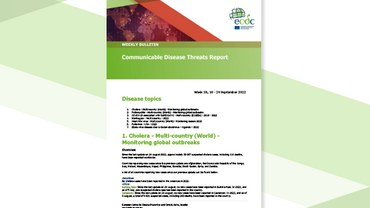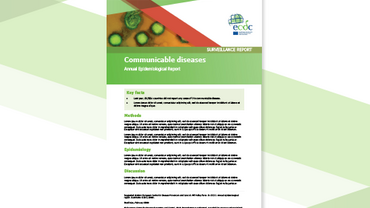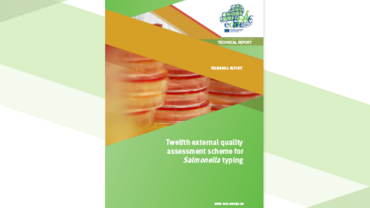Guidelines for the surveillance of native mosquitoes in Europe
While the number of mosquito-borne diseases in Europe is currently low, there is an increasing trend in their global incidence and geographical distribution. It is estimated that over the last two decades nearly a third of all recorded events related to emerging infectious diseases were vector-borne. Among these, mosquito-transmitted pathogens are a prime concern. The recent autochthonous European cases of dengue fever and chikungunya virus infection and outbreaks of malaria, and the now frequent case reports of West Nile fever in Europe and neighbouring countries provide firm evidence of the vulnerability of the region to the transmission of these pathogens.
This report covers existing knowledge on the surveillance of native mosquitoes in Europe and describes customised surveillance methods that are intended to encourage European countries to collect data on native mosquito vector species. It also offers technical guidance on how to conduct surveillance during the pre-disease and disease stages (outbreak) and supplies all information needed to produce risk assessments on mosquito-borne diseases.
Executive summary
New ECDC guidelines, published today, will assist the EU Member States in implementing tailored vector surveillance of native mosquitoes in Europe and help them collect all the information needed to produce risk assessments on related mosquito-borne diseases.
Native mosquito species as vectors for diseases in Europe
Different mosquito species can be vectors of different diseases of public health concern in Europe, such as malaria and West Nile fever, or participate in the emergence and persistence of viruses, such as Usutu and Sindbis.
Europe has witnessed the return of malaria, the emergence of Usutu virus, as well as the ongoing transmission of Sindbis virus - all transmitted by native European mosquitoes. The ‘native’ mosquito species can also be vectors for viruses, already present to the areas: the native West Nile virus is now known to be transmitted to humans by native mosquitoes in a number of European and neighbouring countries each year.
ECDC Guidelines to support Member States in mosquito surveillance
Surveillance of mosquito-borne diseases in Europe is closely connected to surveillance of their competent vectors. While the geographical presence of the mosquito species - a vector for a disease, does not necessarily result in the transmission of the disease, it is the basic requirement for disease transmission to occur.
Mosquito surveillance in some European countries is limited, and where it does occur, it varies from one country to another. ECDC issues the mosquito guidelines with technical advice to the countries to help them improve surveillance coverage and harmonize data collection at EU level, so that data from different countries and areas can be compared.
In 2012 ECDC produced a guideline document for surveying invasive mosquito species – mosquito species that are spreading to Europe being introduced by travel, trade and then establishing themselves when appropriate conditions are available.
The current document focusing on native mosquito species is the follow-up. Both guidelines follow the same format and ensure a comprehensive coverage of surveillance activities within Europe, and help to provide comparable and timely information about both native and invasive mosquito vectors:
- The guidelines provide accurate information and technical support, for field data collection at all stages of mosquito surveillance - from strategic issues and steps for the decision-makers and stakeholders to operational issues and steps for the professionals and non-experts.
- The reports also gives cost estimates of the planned programmes and suggests adaptations.
- The proposed surveillance measures are tailored according to the evolution of the epidemiological situation: scenarios, based on the presence and abundance of mosquitoes in the area.
- The guidelines may be applied in the whole geographic area of Europe: EU, EEA/EFTA countries, including EU Outermost Regions (ORs), but not Overseas Countries and Territories (OCTs).
Focus on risk assessment of mosquito-borne diseases
However, the new mosquito guidelines are enhanced, to support better data collection for the aims of the risk assessment of mosquito-borne diseases in the European countries. The technical document not only proposes surveillance activities which will inform about the presence of the vectors, but also support collection of data for the aims of the risk assessment of mosquito-borne diseases in humans (or animals). The suggested surveillance activities are organised in a way to ensure information for the risk assessment are available and gaps in data availability are easily and timely identified.
The mosquito guidelines have been complemented with the disease risk assessment angle, in order to support European countries in conducting rapid risk assessments on emerging infections transmitted by mosquito vectors. The new guideline document on the surveillance of native mosquitoes offers technical guidance on how to conduct surveillance during the pre-disease and disease stages (outbreak) and supplies all information needed to produce risk assessments on mosquito-borne diseases.






